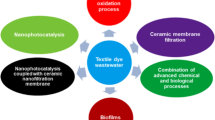Abstract
The electrical nature of cellulose fibres is known to govern flocculation, retention and drainage mechanisms during the papermaking process. Zeta (ζ) potential provides useful information towards better control of wet-end chemistry in respects such as the dosaging of chemical aids. The purpose of this work was to study two electrokinetic properties (ζ potential and cationic demand) in ECF (elementary chlorine free) and TCF (totally chlorine free) bleached pulps from eucalyptus and flax, and examine the influence of pH and conductivity on measurements of such properties made with various methods based on the streaming potential, electrophoresis, polyelectrolyte titration and colloidal titration. Measurements of the electrokinetic properties made at high conductivities (C > 0.1 mS/cm) afforded no discrimination between pulp types in terms of electric charge. In fact, the conductivity used had a strong influence on measurements and shifted ζ potential to less negative values at high levels and to more negative values at low levels. The streaming potential technique proved to be more sensitive to changes in the properties (pH and conductivity) of the fibre suspension than did electrophoresis. Conductivity also influenced polyelectrolyte adsorption in the determination of cationic demand. The study also involved assessing the effect of low conductivities (0.01 < C < 0.1 mS/cm), which allowed fibre types and bleaching processes to be easily distinguished. Based on the results, accurately characterizing and identifying not only pulp types, but also the effects of mechanical, chemical and biochemical treatments on fibres, requires measuring the electrokinetic properties at a fixed pH and low conductivity.














Similar content being viewed by others
References
Bhardwaj NK, Nguyen KL (2005) Charge aspects of hydrogen peroxide bleached de-inked pulps. Colloids Surf A Physicochem Eng Asp 262(1–3):232–237. doi:10.1016/j.colsurfa.2005.05.008
Bhardwaj NK, Hoang V, Nguyen KL (2007) A comparative study of the effect of refining on physical and electrokinetic properties of various cellulosic fibres. Bioresour Technol 98(8):1647–1654. doi:10.1016/j.biortech.2006.05.040
Casey JP (1980) Pulp and paper: chemistry and chemical technology. John Wiley, New York
Davidson GF (1948) The acidic properties of cotton cellulose and derived oxycellulose. Part II. The absorption of methylene blue. J Text Inst 39:65–86
Delgado AV, Gonzalez-Caballero F, Hunter RJ et al (2007) Measurement and interpretation of electrokinetic phenomena. J Colloid Interface Sci 309(2):194–224. doi:10.1016/j.jcis.2006.12.075
Gutiérrez A, del Río JC, Rencoret J, Ibarra D, Martínez ÁT (2006) Main lipophilic extractives in different paper pulp types can be removed using the laccase-mediator system. Appl Microbiol Biotechnol 72(4):845–851
Horvath AE, Lindstrom T (2007) Indirect polyelectrolyte titration of cellulosic fibers–surface and bulk charges of cellulosic fibers. Nord Pulp Pap Res J 22(1):87–92. doi:10.3183/NPPRJ-2007-22-01-p087-092
Horvath AE, Lindstrom T, Laine J (2006) On the indirect polyelectrolyte titration of cellulosic fibers. conditions for charge stoichiometry and comparison with ESCA. Langmuir 22(2):824–830. doi:10.1021/la052217i
Hubbe MA (2008) Accurate charge-related measurements of samples from the wet end: testing at low electrical conductivity. Pap Technol 49(6):21–26
Hubbe MA, Rojas O, Lucia L et al (2007) Consequences of the nanoporosity of cellulosic fibers on their streaming potential and their interactions with cationic polyelectrolytes. Cellulose 14(6):655–671. doi:10.1007/s10570-006-9098-4
Jaycock MJ, Pearson JL (1976) A study of the retention of pigment during paper formation. J Colloid Interface Sci 55(1):181–190. doi:10.1016/0021-9797(76)90024-2
Katz S, Beatson RP, Scallan AM (1984) The determination of strong and weak acidic groups in sulfite pulps. Sven Papperstidn 87(6):48–53
Koljonen K, Mustranta A, Stenius P (2004) Surface characterisation of mechanical pulps by polyelectrolyte adsorption. Nord Pulp Pap Res J 19(4):495–505. doi:10.3183/NPPRJ-2004-19-04-p495-505
Lloyd JA, Horne CW (1993) The determination of fibre charge and acidic groups of radiata pine pulps. Nord Pulp Pap Res J 8(1):48–57. doi:10.3183/NPPRJ-1993-08-01-p048-052
Mathews J, Gustafson R, Hodgson K (2004) A method to determine the charge demand of single pulp fibers. Nord Pulp Pap Res J 19(4):453–459. doi:10.3183/NPPRJ-2004-19-04-p453-459
Shaw D (1992) Introduction to colloid and surface chemistry. Butterworth-Heinemann, London
Stana-Kleinschek K, Ribitsch V (1998) Electrokinetic properties of processed cellulose fibers. Colloids Surf A Physicochem Eng Asp 140(1–3):127–138. doi:10.1016/S0927-7757(97)00301-4
Terayama H (1952) Method of colloid titration: a new titration between polymer ions. J Polym Sci Pol 8(2):243–253. doi:10.1002/pol.1952.120080209
Wågberg L, Odberg L (1989) Polymer adsorption on cellulosic fibers. Nord Pulp Pap Res J 4(2):135–140. doi:10.3183/NPPRJ-1989-04-02-p135-140
Wågberg L, Odberg L, Glad-Nordmark G (1989) Charge determination of porous substrates by polyelectrolyte adsorption part 1. Carboxymethylated, bleached cellulosic fibers. Nord Pulp Pap Res J 4(2):71–76. doi:10.3183/NPPRJ-1989-04-02-p071-076
Wang F, Hubbe MA (2001) Development and evaluation of an automated streaming potential measurement device. Colloids Surf A Physicochem Eng Asp 194(1–3):221–232. doi:10.1016/S0927-7757(01)00802-0
Wang F, Hubbe MA (2002) Charge properties of fibres in the paper mill environment—part I: effect of electrical conductivity. J Pulp Pap Sci 28(10):347–353
Acknowledgments
This work was possible with the financial support from Education and Science Ministry (MEC) Spanish Programmes CTQ2004-07560-C02-01 and CTQ2007-68003-C02-01; the Integrated Project (IP) funded by the European Union: FP6-2004-NMP-NI-4 “BIORENEW”; a Technical University of Catalonia (UPC) research grant. Programme Alban, the European Union Programme of High Level Scholarships for Latin America, E04D036666CO. Finally the authors would like to give thanks to ENCE and CELESA for supplying eucalyptus and flax pulps respectively.
Author information
Authors and Affiliations
Corresponding author
Rights and permissions
About this article
Cite this article
Cadena, E.M., Garcia, J., Vidal, T. et al. Determination of zeta potential and cationic demand in ECF and TCF bleached pulp from eucalyptus and flax. Influence of measuring conditions. Cellulose 16, 491–500 (2009). https://doi.org/10.1007/s10570-009-9275-3
Received:
Accepted:
Published:
Issue Date:
DOI: https://doi.org/10.1007/s10570-009-9275-3




